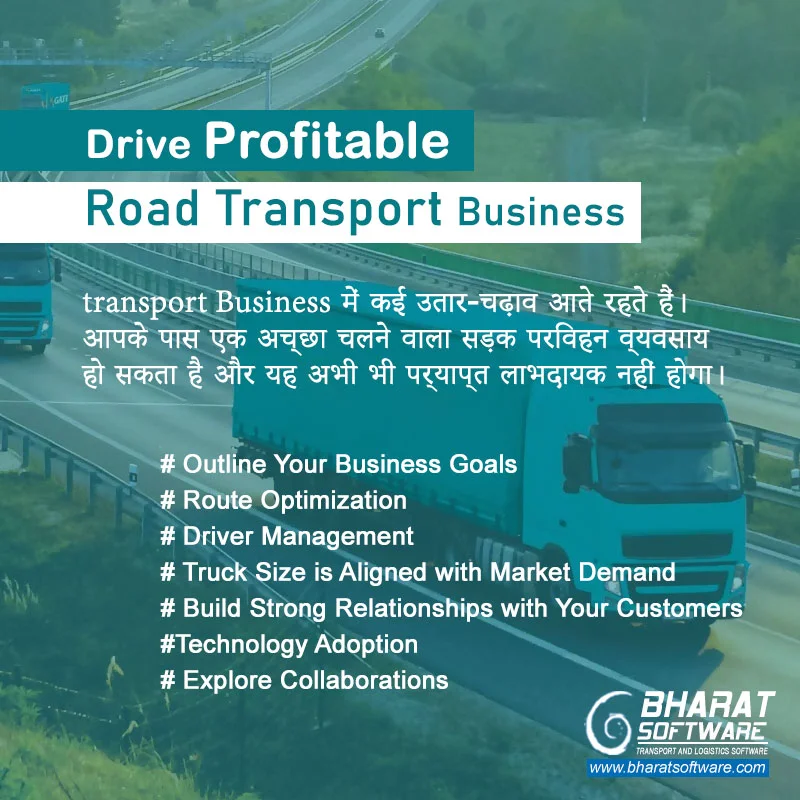The road transport business provides services to move goods one place to destination via truck. There are many types of goods transportation land, train, truck, water, and air. The transport business comes with various ups and downs. You can have a good-running road transport business and it will still not be profitable enough.
However, there are small steps you can take to drive a profitable road transport business. In this article, we are going to have a look at the compelling steps you can take to make the profitable business, or you can increase the profits.
Let’s begin.
(a) Outline Your Business Goals
The base step is to outline your business goals. The first step for any business success is to create a business plan that highlights all your business goals and has details about the same. So, you first need to find out what are your main goals.
To begin with, the goals should include small goals and a big goal. For example, the small goals can be to expand to 3 new cities and 1 big goal could be to expand to a new state. In this way, you should have multiple business goals.
In the same way, you need to be specific when it comes to goals. You need to decide whether you want your revenue to increase by 10% or 20%. Instead of just aiming to increase the revenue, you need to have numbers in mind. In this way, you are more likely to find the “how” and achieve these goals. Make sure you design the business plan and execute it one by one. Further, all your top employees should know about your echo goal.
(b) Route Optimization
The next way to run a successful business is to spend enough time and money on route optimization. Given the nature of the business, it’s very important to do route optimization. Trucks waste hours if they get on the wrong road. A proper route optimization could save you hours of time and money.
This applies to you especially if you have small deliveries in different parts of the country. For example, if you are running from Delhi and you have to give 3 parcels in different states of the country, you will have to do a proper route optimization.
The software can do that for you if you are not finding the perfect route. If your truck goes on the same route daily, you need to spend some time for the first-time doing route optimization.
(c) Driver Management
The next part of the process is driver management. A truck might have to run for hours. Therefore, you will need more than 1 driver in the cockpit who can drive the truck when one shift is over.
Driver management is all about managing the drivers in such a way that they can get maximum work-life balance and they can also work for enough hours along with good sleep. In most cases, you can assign the right drivers to the truck depending on the terrain and the region. If the region is familiar to the driver, they can drive more efficiently.
(d) Truck Size is Aligned with Market Demand
Truck size matters a lot when it comes to saving for the traffic. A big truck should only be used if there is enough load. For part truckload business, you can prefer another truck or a tempo that can do the work for you.
Nowadays, people are using small trucks or tempo to ensure faster delivery. A small truck can easily go through any type of road. So, if the destination location is on a small road where it’s harder for big trucks to go on, you can always go with small trucks.
Overall, it will depend on your requirements on which type of trucks you prefer. In most cases, the main aim should be to have the best truck that suits your requirements.
(e) Build Strong Relationships with Your Customers
If you want to make your road transport business profitable, you need to make sure that you have strong relationships with your customers.
This applies for both if you are doing the retail business or you are into B2B segments. You will have to create strong relationships with your clients if you want to succeed in this business.
It’s very important to have proper relationships with your clients even if you are into retail segments, Most people ignore the retail segments thinking they can get away with the same. However, you should never do that. The retailers are good at referrals.
So, if you provide good customer support, you are more likely to get more customers from the same business. In the same way, B2B clients will be spending a lot of money. Maintaining a proper relationship with them will make them stay longer. Therefore, it’s beneficial for both.
(f) Technology Adoption
Technology adoption is an important part of today’s world. If you don’t have a tech-enabled business, you are missing out on a lot in this system. So, you need to adopt the technology and implement that in your business.
There are many technologies that you can implement in the logistics and transport industry. To begin with, GPS tracking is the smallest and most important tech that every transport business has. It shows you the complete tracking of your trucks. It will allow you to do the route management more carefully and it will also optimize the overall driver management.
Further, it will allow you to send the updates to the customers. Therefore, it helps with keeping a relationship with the customers. Further, there are digital documentation where you don’t need to use paper or books for anything. It starts with the billing software and can go up to keeping track of the entire business operations in the software.
(g) Explore Collaborations
Collaborations are rare and common at the same time in logistics business. Let’s understand the perspective.
Businesses already do collaborations. However, they are not aware of the same. For example, if you are transporting to a place where you have a very small amount of load, you can collaborate with another logistics that goes in the same route and has extra space for your load as well. In this way, you can ask them to transport your deliveries to them. This is one of the easiest ways to collaborate.
There are many other collaborations you can do. For example, some logistics businesses even have partnered offices if the transport locations are not the same. So, if a company is only transporting to the north, you can partner with them and offer the deliveries in the south, east, or west. In this way, both the companies will profit.
(h) Transport Business Software
Lastly, the best way to increase the profits and drive the business to new heights is to get transport business software. This software is also known as a Transport Management Software. It’s a complete system where you can transfer all your current business operations online.
You can not only have complete operations online with the cloud. There are various modules here where you can manage orders, customer tracking, route management, driver management, fleet management, payroll, employee management, and a lot more.
So, we can say that it’s the ultimate investment you will make to drive your business into profits.
Summary
To conclude, this was all about how to drive a profitable road transport business at the lowest possible costs. You can implement all the techniques and you’re good to go. Make sure you track all factors that you implement. In this way, you can see which one is going better.
It’s highly recommended to get the software for the logistics business. It will make all the processes easier and faster. In this way, once you get the software, you will automatically do most of the things. For instance, if you do the route management manually, you will waste a lot of time.
Therefore, you can completely rely on the software instead of doing it manually. Make sure that you use all the features of the software. Further, you should always do the rest of the things you do such as expanding to more cities and opening new offices.

Rishit Bhatt is a content strategist and a professional writer with a keen interest in technology and tech-enabled businesses. He aims to help businesses integrate tech into their on-premises infrastructure with technical documentation and helpful articles.

